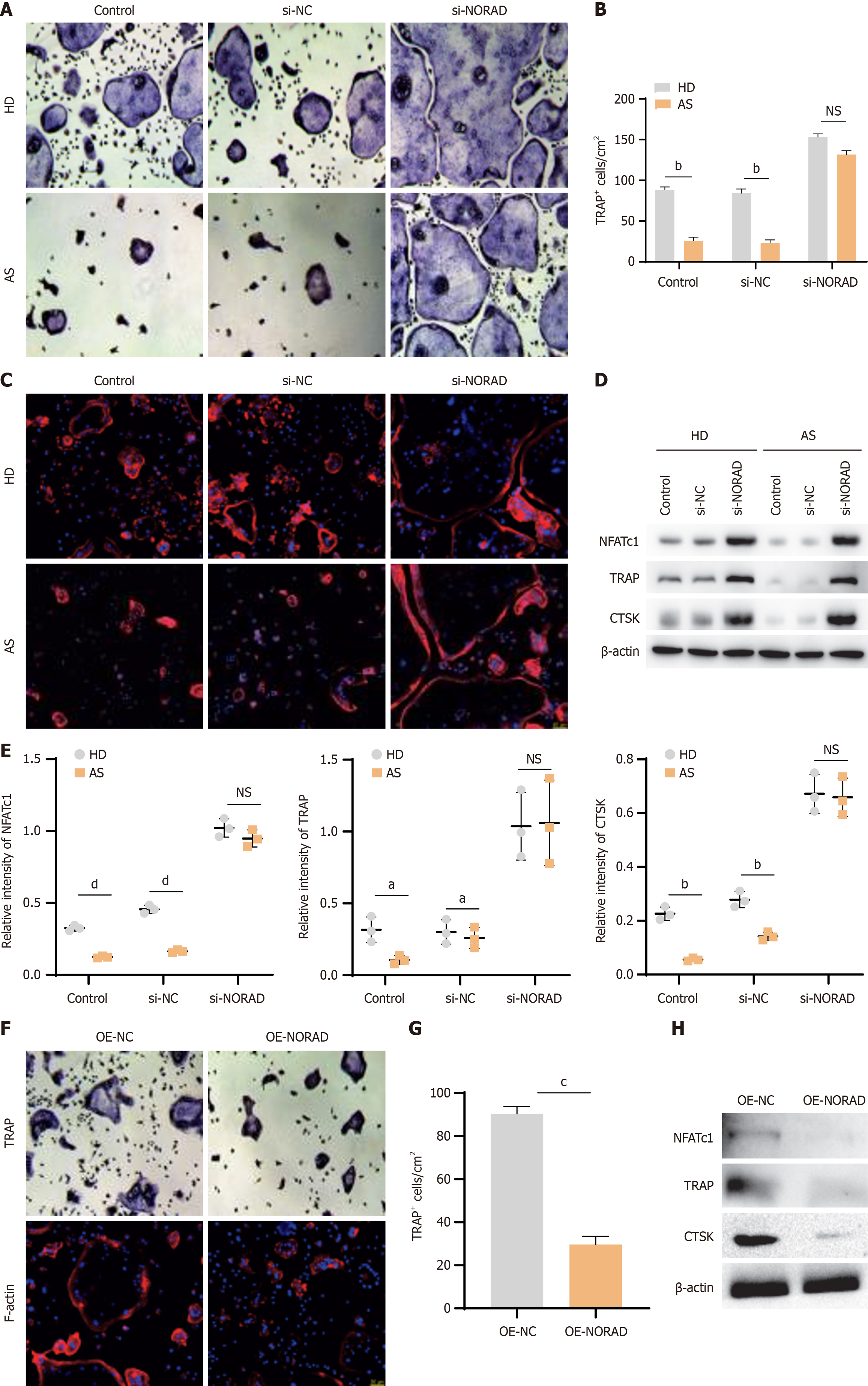Copyright
©The Author(s) 2025.
World J Stem Cells. Mar 26, 2025; 17(3): 98911
Published online Mar 26, 2025. doi: 10.4252/wjsc.v17.i3.98911
Published online Mar 26, 2025. doi: 10.4252/wjsc.v17.i3.98911
Figure 4 Long non-coding RNA activated by DNA damage in mesenchymal stem cells inhibits osteoclastogenesis.
A: Representative images of tartrate resistant acid phosphatase (TRAP) staining of osteoclasts co-cultured with mesenchymal stem cells on day 9 after knocking down long non-coding RNA activated by DNA damage (× 100); B: Quantitative data of TRAP+ osteoclasts number in each well is shown; C: Representative images of osteoclasts stained with F-actin assays (× 200); D: Western blot analysis was performed to detect protein levels of nuclear factor of activated T cells 1 (NFATc1), TRAP, and cathepsin K (CTSK); E: Quantitative data for NFATc1, TRAP, and CTSK protein levels determined by western blot analyses are shown; F: Representative images of TRAP staining (× 100) and F-actin assays (× 200); G: Quantitative data of TRAP+ osteoclasts number in each well is shown; H: Western blot analysis was performed to detect protein levels of NFATc1, TRAP, and CTSK. The statistical data are presented as the means ± SDs; n = 3 in each group. NS: No significant difference; aP < 0.05, bP < 0.01, cP < 0.005, dP < 0.001. AS: Ankylosing spondylitis; HD: Healthy donors; si-NC: Small interfering RNA of negative control; TRAP: Tartrate resistant acid phosphatase; NFATc1: Nuclear factor of activated T cells 1; CTSK: Cathepsin K; OE-NC: Overexpression of negative control; OE-NORAD: Overexpression of Non-coding RNA activated by DNA damage.
- Citation: Liu WJ, Wang JX, Li QF, Zhang YH, Ji PF, Jin JH, Zhang YB, Yuan ZH, Feng P, Wu YF, Shen HY, Wang P. Fat mass and obesity-associated protein in mesenchymal stem cells inhibits osteoclastogenesis via lnc NORAD/miR-4284 axis in ankylosing spondylitis. World J Stem Cells 2025; 17(3): 98911
- URL: https://www.wjgnet.com/1948-0210/full/v17/i3/98911.htm
- DOI: https://dx.doi.org/10.4252/wjsc.v17.i3.98911









